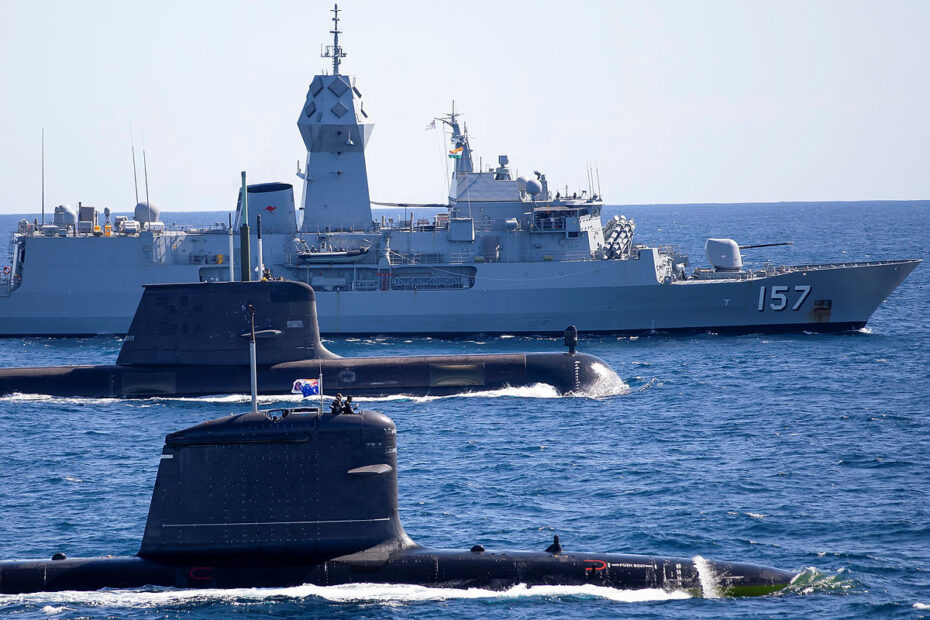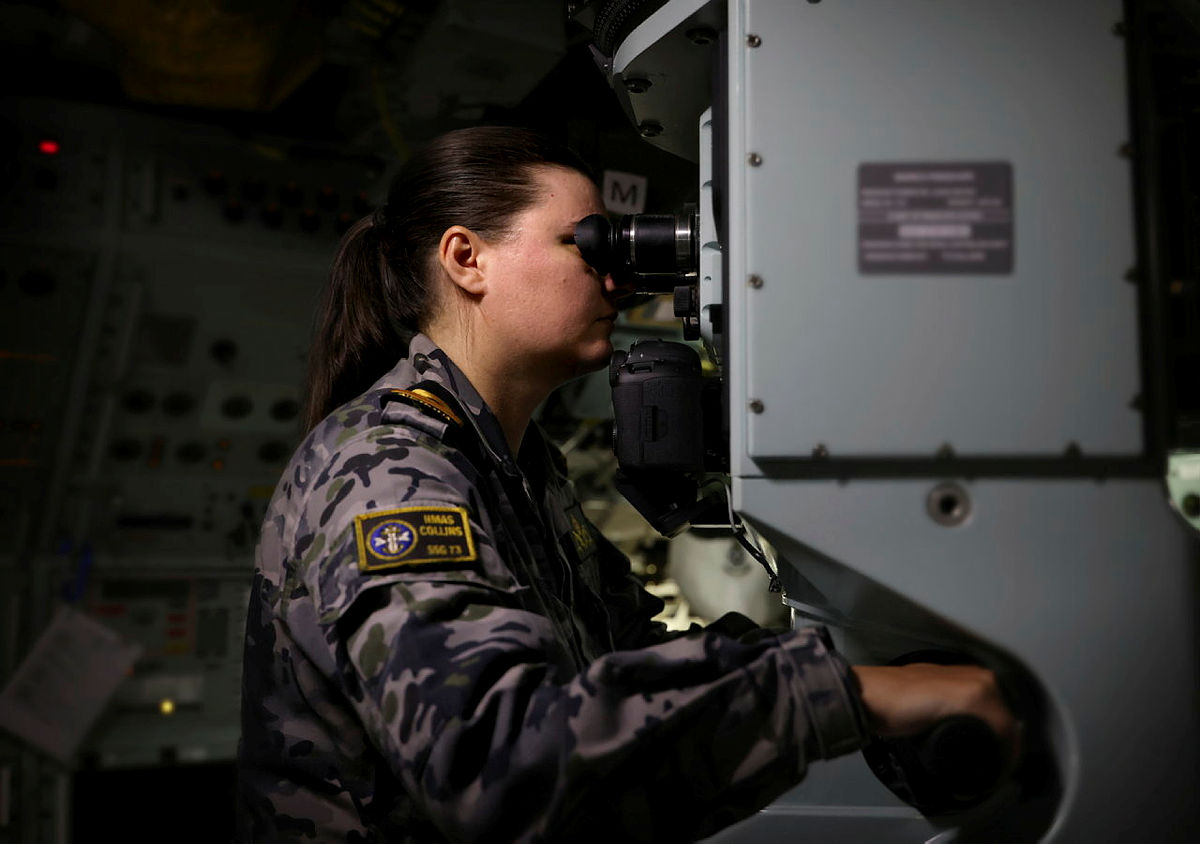(Front to Back) Indian submarine INS Vagir, HMAS Rankin and HMAS Perth conduct maneuver exercise at the Western Australian Exercise Area during the Indian Submarine INS Vagir visit to Fleet Base West in Perth, Western Australia in August 2023. The role of electronic warfare in submarine operations is crucial for the Australian submarines in the wake of changing geo-political dynamic and rapidly evolving threat perception. (Photo Credit: Australian Department of Defence)
Electronic warfare (EW) plays a key role in submarine operations by enhancing the stealth, communication, and overall effectiveness of submarines in a maritime environment. Here are several ways in which electronic warfare is crucial for submarine operations:
- Stealth and Covert Operations
- Detection Avoidance: Submarines rely on electronic countermeasures (ECM) to avoid detection by adversaries. ECM systems can jam or deceive enemy sensors, making it difficult for other naval assets to locate the submarine.
- Silent Communication: In the depths of the ocean where traditional communication methods are challenging, electronic warfare allows submarines to communicate silently and securely. Advanced EW systems enable encrypted communication, minimizing the risk of interception by adversaries.
- Threat Detection and Situational Awareness
- Electronic Support Measures (ESM): Submarines use ESM for passive detection and analysis of electronic signals emitted by other platforms. This provides valuable intelligence about the presence and location of potential threats, contributing to the submarine’s situational awareness.
- Analysis of the Electromagnetic Environment: ESM helps submarines analyze the electromagnetic environment, enabling them to understand the electronic activities of nearby surface ships, aircraft, or coastal installations. This information aids in making informed decisions about navigation and potential threats.
- Counteracting Adversary Sensors
- ECM Systems: When a submarine identifies an incoming threat, ECM systems can be deployed to disrupt or deceive the adversary’s electronic sensors. This might involve the use of electronic decoys, jamming devices, or other tactics to divert attention away from the submarine’s actual location.
- Secure Communication Channels
- Encryption and Anti-Jamming Technologies: EW systems on submarines ensure secure communication links with command centers or other submarines. Encryption and anti-jamming technologies prevent adversaries from intercepting or disrupting critical communication channels.
- Integration of Advanced Technologies
- Artificial Intelligence (AI) and Quantum Technologies: Submarines are increasingly integrating AI and quantum technologies into their EW systems. AI enhances the adaptability of EW systems to evolving threats, while quantum technologies provide secure and unhackable communication channels, reinforcing the overall security of submarine operations.
- Coordination of Strategic Movements
- Tactical Advantage: EW capabilities allow submarines to coordinate strategic movements and respond effectively to dynamic maritime scenarios. This tactical advantage is crucial for executing covert operations and maintaining an edge in undersea warfare.
In summary, electronic warfare is integral to submarine operations, providing a suite of tools and tactics to ensure stealth, threat detection, secure communication, and strategic coordination. As submarines continue to advance with technological innovations, electronic warfare remains a cornerstone of their capabilities, allowing them to operate effectively beneath the ocean’s surface.



